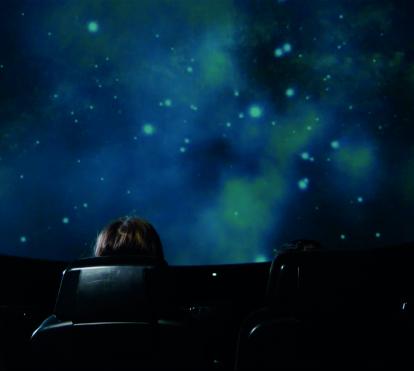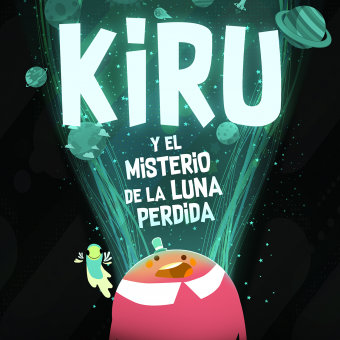This season, the CosmoCaixa Science Museum is launching four new Planetarium shows, including one designed for babies and another focused on eclipses, taking advantage of the total solar eclipse in 2026.
Baby Symphony. This multimedia show, which will be presented in the Bubble Planetarium, combines instrumental music, composed by Simon Leclerc and performed by the Montreal Symphony Orchestra, with visuals of distant nebulas, star dust clouds, colourful beads and handcrafted objects. All of these come to life in captivating choreographies designed to playfully stimulate the sight and hearing of babies aged 0 to 18 months.
Kiru and the Mystery of the Missing Moon. This fulldome animated projection, produced by the ”la Caixa” Foundation and designed especially for children aged 3 to 6, tells the story of the friendship between Chispita, a little firefly, and Kiru, a cheerful fairground entertainer. Together they embark on a journey that gives voice to asteroids, planets and stars, revealing not only the fascinating story of the Moon and its phases, but also offering tools to understand and manage one of the most primal human emotions: the fear of the dark.
Polaris. James, a penguin from the South Pole, and Vladimir, a polar bear from the North Pole, build an observatory and a “space submarine” to embark on an adventure where they seek to answer all their scientific and astronomical questions. The film, produced by the Saint-Étienne Planetarium, explores topics such as the characteristics of the poles, the similarities and differences between planets, the concept of gravity and the tilt of the Earth.
3clipse. On 12 August 2026, the first total solar eclipse visible from the Iberian Peninsula in over a century will take place, providing a unique opportunity to reflect on these spectacular phenomena. This reflection can be explored through an audiovisual programme produced by the Spanish technoplanetarium group, a network of advanced digital planetariums in Spain. Designed for projection in a hemispherical dome, 3clipse helps a non-specialist audience understand the nature of this phenomenon and also provides insight into Spain’s important role in astronomical research, particularly in relation to our star.


